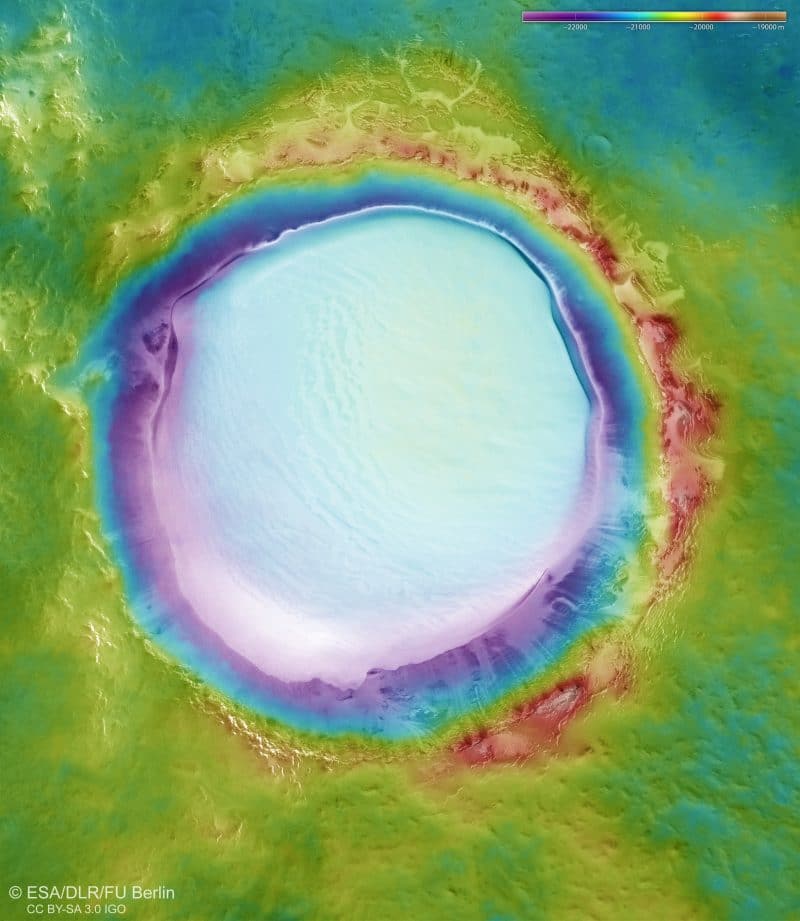An analysis of new rock samples taken from NASA’s Curiosity rover uncovered evidence of clay minerals on Mars, suggesting the presence of water from a large, ancient lake. While the presence of clay supports the notion Mars may have once had water, it doesn’t conclusively prove the planet harboured conditions for life.
Ancient Mars may have contained water packed with the ingredients to support life, but there is no known life on the Red Planet today. A new study suggests the conditions on the present-day Martian surface are actually too cold for life.
“Our results indicate that (meta)stable brines on the Martian surface and its shallow subsurface (a few centimetres deep) are not habitable because their water activities and temperatures fall outside the known tolerances for terrestrial life,” the researchers wrote in the study’s abstract. “Furthermore, (meta)stable brines do not meet the Special Region requirements, reducing the risk of forwarding contamination and easing threats related to the exploration of the Martian surface.”
Using computer models, the researchers noted that 40% of the Martian surface could have these brines.
Brines are pools of water that contain an extraordinarily high amount of salt. Brines exist on Earth and they are believed to exist on Mars, but their presence has not been confirmed. The research has been published in the journal Nature Astronomy.
In February, a separate study suggested that saltwater may form under very specific conditions at certain latitudes on the Martian surface.
In 2015, NASA said liquid water existed on Mars, but that was amended in 2017, when the space agency said the dark features previously interpreted as water were likely grains of sand and dust.
The possible existence of brines is up for debate, as the researchers said they could exist on the Martian surface for six consecutive hours for “a few percent of the year,” so it’s likely that no extraterrestrial viruses or microbes inhabit them.
“The surface of Mars today is bitterly cold, relentlessly desiccating, and harshly oxidizing, so it is unlikely that life as we know it could be active, even so, the current policy is to treat any Mars samples returned to Earth with the utmost caution,” Said Josh Handal, NASA Public Affairs Officer.
Earlier this month, former NASA Ames director Scott Hubbard said he was concerned future rock samples brought back from Mars will need to be checked and quarantined, as will the astronauts who return from future visits.
“I have heard from some colleagues in the human spaceflight area that they can see how, in the current environment, the general public could become more concerned about bringing back some alien microbe, virus or contamination,” Hubbard told the press in an interview.
NASA is slated to launch the recently renamed Perseverance rover on July 17, 2020. In March, NASA confirmed that the pandemic had not yet impacted launch preps for the unmanned rover, with work “continuing on schedule.”
The Perseverance rover will attempt to detect if there is any fossilized evidence of extraterrestrial beings, in addition to other tasks.
Once the rover lands on Mars, it will join the still functioning Curiosity rover and the now-deceased Opportunity rover on the Red Planet. Unlike Curiosity or Opportunity, this rover will carry the “first helicopter that will fly on another planet,” NASA added.
NASA’s long-term goal is to send a manned mission to Mars in the 2030s.
